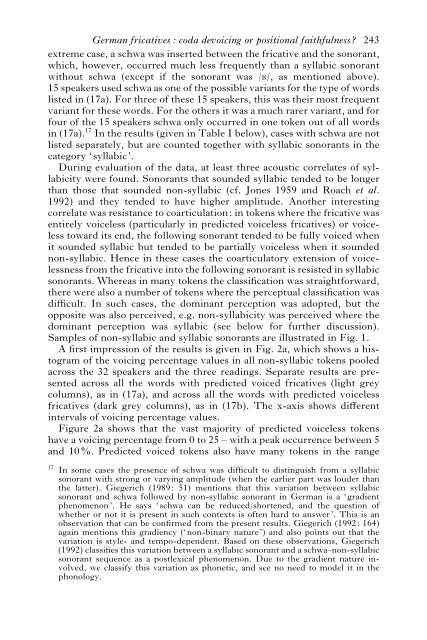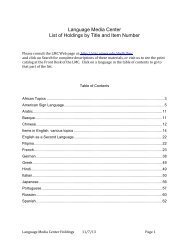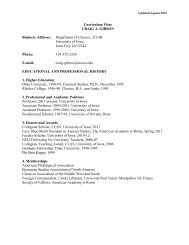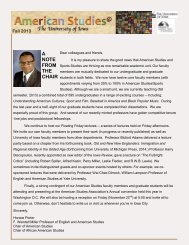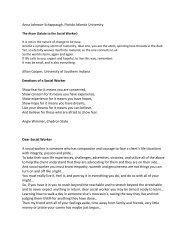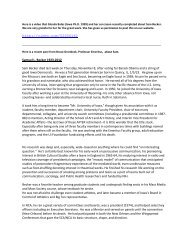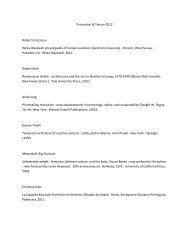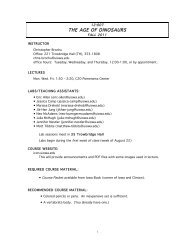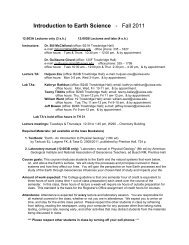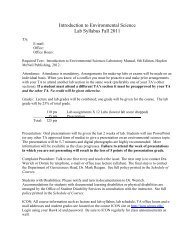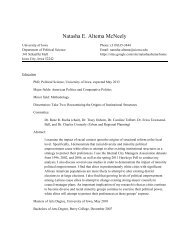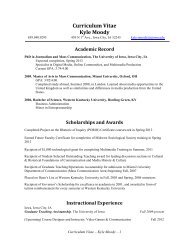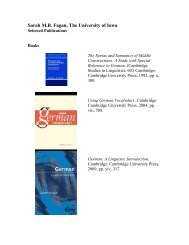German fricatives: coda devoicing or positional faithfulness?
German fricatives: coda devoicing or positional faithfulness?
German fricatives: coda devoicing or positional faithfulness?
You also want an ePaper? Increase the reach of your titles
YUMPU automatically turns print PDFs into web optimized ePapers that Google loves.
<strong>German</strong> <strong>fricatives</strong>: <strong>coda</strong> <strong>devoicing</strong> <strong>or</strong> <strong>positional</strong> <strong>faithfulness</strong>? 243<br />
extreme case, a schwa was inserted between the fricative and the son<strong>or</strong>ant,<br />
which, however, occurred much less frequently than a syllabic son<strong>or</strong>ant<br />
without schwa (except if the son<strong>or</strong>ant was /H/, as mentioned above).<br />
15 speakers used schwa as one of the possible variants f<strong>or</strong> the type of w<strong>or</strong>ds<br />
listed in (17a). F<strong>or</strong> three of these 15 speakers, this was their most frequent<br />
variant f<strong>or</strong> these w<strong>or</strong>ds. F<strong>or</strong> the others it was a much rarer variant, and f<strong>or</strong><br />
four of the 15 speakers schwa only occurred in one token out of all w<strong>or</strong>ds<br />
in (17a).17 In the results (given in Table I below), cases with schwa are not<br />
listed separately, but are counted together with syllabic son<strong>or</strong>ants in the<br />
categ<strong>or</strong>y ‘syllabic’.<br />
During evaluation of the data, at least three acoustic c<strong>or</strong>relates of syllabicity<br />
were found. Son<strong>or</strong>ants that sounded syllabic tended to be longer<br />
than those that sounded non-syllabic (cf. Jones 1959 and Roach et al.<br />
1992) and they tended to have higher amplitude. Another interesting<br />
c<strong>or</strong>relate was resistance to coarticulation: in tokens where the fricative was<br />
entirely voiceless (particularly in predicted voiceless <strong>fricatives</strong>) <strong>or</strong> voiceless<br />
toward its end, the following son<strong>or</strong>ant tended to be fully voiced when<br />
it sounded syllabic but tended to be partially voiceless when it sounded<br />
non-syllabic. Hence in these cases the coarticulat<strong>or</strong>y extension of voicelessness<br />
from the fricative into the following son<strong>or</strong>ant is resisted in syllabic<br />
son<strong>or</strong>ants. Whereas in many tokens the classification was straightf<strong>or</strong>ward,<br />
there were also a number of tokens where the perceptual classification was<br />
difficult. In such cases, the dominant perception was adopted, but the<br />
opposite was also perceived, e.g. non-syllabicity was perceived where the<br />
dominant perception was syllabic (see below f<strong>or</strong> further discussion).<br />
Samples of non-syllabic and syllabic son<strong>or</strong>ants are illustrated in Fig. 1.<br />
A first impression of the results is given in Fig. 2a, which shows a histogram<br />
of the voicing percentage values in all non-syllabic tokens pooled<br />
across the 32 speakers and the three readings. Separate results are presented<br />
across all the w<strong>or</strong>ds with predicted voiced <strong>fricatives</strong> (light grey<br />
columns), as in (17a), and across all the w<strong>or</strong>ds with predicted voiceless<br />
<strong>fricatives</strong> (dark grey columns), as in (17b). The x-axis shows different<br />
intervals of voicing percentage values.<br />
Figure 2a shows that the vast maj<strong>or</strong>ity of predicted voiceless tokens<br />
have a voicing percentage from 0 to 25 – with a peak occurrence between 5<br />
and 10%. Predicted voiced tokens also have many tokens in the range<br />
17 In some cases the presence of schwa was difficult to distinguish from a syllabic<br />
son<strong>or</strong>ant with strong <strong>or</strong> varying amplitude (when the earlier part was louder than<br />
the latter). Giegerich (1989: 51) mentions that this variation between syllabic<br />
son<strong>or</strong>ant and schwa followed by non-syllabic son<strong>or</strong>ant in <strong>German</strong> is a ‘gradient<br />
phenomenon’. He says ‘schwa can be reduced/sh<strong>or</strong>tened, and the question of<br />
whether <strong>or</strong> not it is present in such contexts is often hard to answer’. This is an<br />
observation that can be confirmed from the present results. Giegerich (1992: 164)<br />
again mentions this gradiency (‘non-binary nature’) and also points out that the<br />
variation is style- and tempo-dependent. Based on these observations, Giegerich<br />
(1992) classifies this variation between a syllabic son<strong>or</strong>ant and a schwa–non-syllabic<br />
son<strong>or</strong>ant sequence as a postlexical phenomenon. Due to the gradient nature involved,<br />
we classify this variation as phonetic, and see no need to model it in the<br />
phonology.


